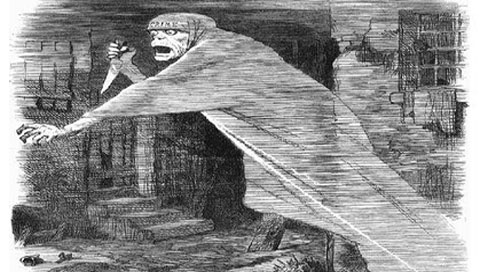 On a typical day at an English construction site, one would expect to experience hard hats, brickie’s bums and mounds of chips smothered in beans and cheese – not headless monks, moving objects and sudden feelings of coldness.
On a typical day at an English construction site, one would expect to experience hard hats, brickie’s bums and mounds of chips smothered in beans and cheese – not headless monks, moving objects and sudden feelings of coldness.
However such were the reports coming from workers at Thorpe Park, an amusement park in Surrey, England, after construction began on the park’s new water ride ‘Storm Surge’ earlier this week.
According to Mike Vallis, Thorpe Park Divisional Director, it was after digging 50 feet into the ground to prepare the site for construction that paranormal activity began.
Workers were suddenly thrust into the terrifying unknown. Desperation kicked in, spanners were dropped, and phone calls were made to the only people thought capable of dealing with such “fluffy nonsense” – the resident ghost busters.
Eagerly armed with a Ouija board and spook friendly camera gear, paranormal expert Jim Arnold arrived on the scene to report an immediate and strong indication of spectral presence. After some tests, Mr Arnold witnessed significant Ouija board activity, floating orbs and ghostly images at the site.
Further investigation revealed the proposed Storm Surge site was an area known as ‘Monk’s Walk’, located not far from Chertsey Abbey. It was here, during the Ninth Century, that several priests were slaughtered during Viking raids before later being laid to rest in stone coffins.
The coffins had been exhumed, although according to the London Evening Standard, the walk, which linked the abbey to Thorpe Church, was built in the foreboding year of 666 AD.
Such news sparked the arrival of forensic geophysicist Peter Masters, of Cranfield University, for a second opinion. Using deep ground radar, Dr Masters affirmed that signals picked up at the site were similar to those of an ancient burial ground.
The news has been received as an ominous sign, as some workers are unwilling to return, while the ride is being shifted to another part of the park. However, entrepreneur and unorthodox councillor, Tom Hertley, believes the find presents a unique opportunity.
He says the site could be used for an attraction named ‘The Cavern of Despair’, where hard-core thrill-seekers would be locked in a subterranean pit for half an hour. He says overheads would be minimal and the entry fee high, all while alcoholics and drug abusers, who are bored with ‘normality’, could get help – by embarking on an underground, fear-laden rampage of sobriety.